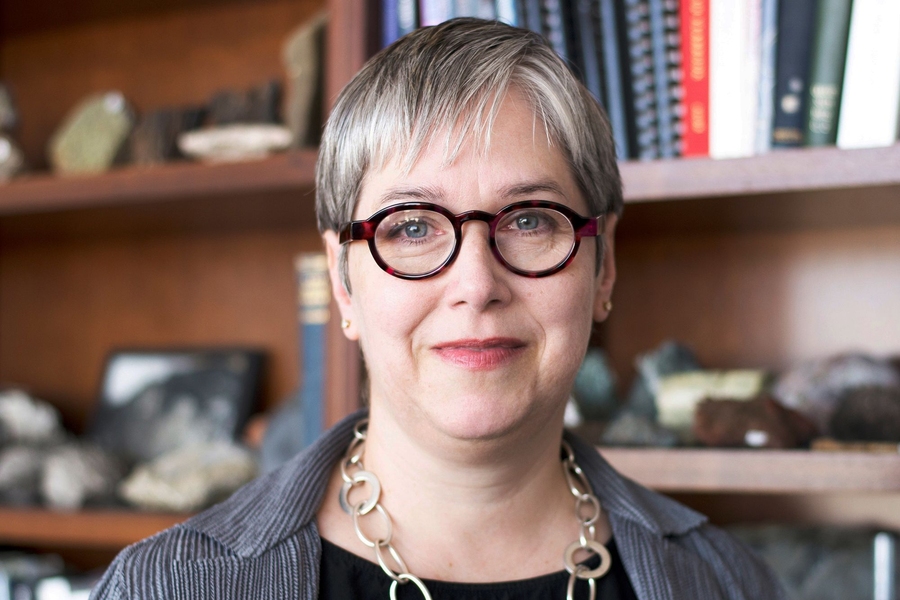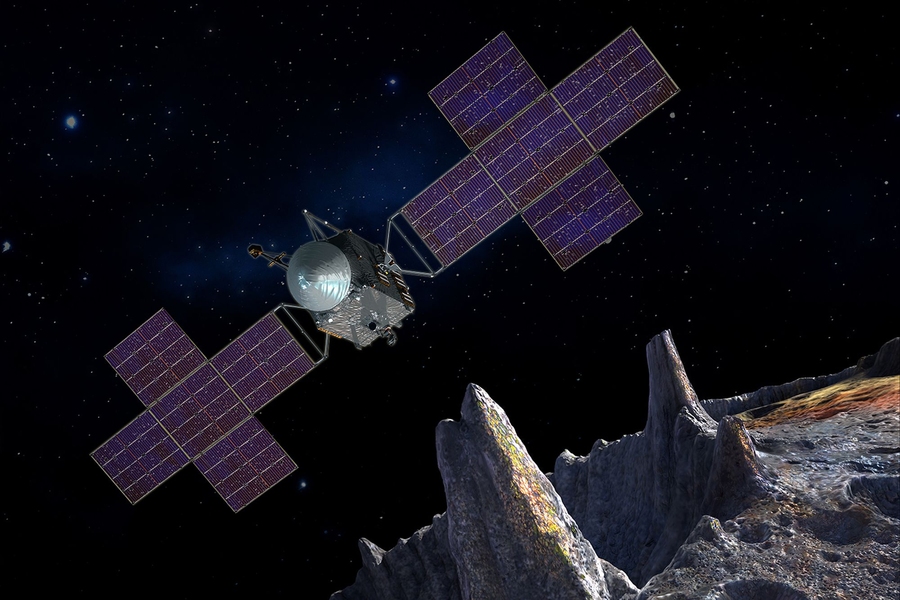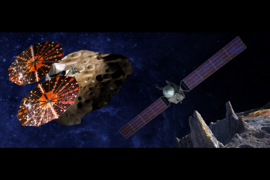Lindy Elkins-Tanton ’87, SM ’87, PhD ’02 is reaching for the stars — literally. She is the principal investigator for Psyche, a NASA mission that will explore an unusual metal asteroid known as 16 Psyche.
The mission does not launch until 2023, but preparations have begun in collaboration with faculty in the Department of Earth, Atmospheric and Planetary Sciences (EAPS). Professors Benjamin Weiss and Maria Zuber, who also serves as MIT's vice president for research, wrote a paper about the asteroid with Elkins-Tanton that was the basis for the team’s selection for NASA’s Discovery Program. MIT Professor Richard Binzel is also a team member.
At MIT, Elkins-Tanton earned BS and MS degrees in geology and geochemistry with a concentration on how planets form. Then she detoured from academia to the business world before becoming a college lecturer in mathematics in 1995.
“I realized that in academia, you have this incredible privilege of always being able to ask a harder, bigger question, so you never get bored, and you have the opportunity to inspire students to do more in their lives,” says Elkins-Tanton. She returned to MIT to earn a PhD in geology and geophysics, and for the next decade after completing that degree, she taught, first at Brown University and then at MIT as an EAPS faculty member.
Since 2014, Elkins-Tanton has been professor and director of the School of Earth and Space Exploration at Arizona State University. She has been revamping the undergraduate curriculum to give it more of an MIT flavor, bringing current research into the classroom and having students tackle real-world problems. This approach has helped her transmit excitement about the field to her students.
Elkins-Tanton also draws on business skills that she says are quite useful for scientific collaboration: negotiating, making a compelling pitch, and knowing how to build a team that works well. She is applying those skills, along with her management and leadership experience, as the second woman to lead a NASA mission to a major solar system body (after Zuber, who was principal investigator of the Gravity Recovery and Interior Laboratory, or GRAIL, mission).
Psyche represents a compelling target for study because scientists theorize that it was an ordinary asteroid until violent collisions with other objects blasted away most of its outer rock, exposing its metallic core. This core, the first to be studied, could yield insights into the metal interior of rocky planets in the solar system.
“We have no idea what a metal body looks like. The one thing I can be sure of is that it will surprise us,” Elkins-Tanton says. “I love this stuff — there are new discoveries every day.”
A version of this article originally appeared in the July/August 2017 issue of MIT Technology Review.








